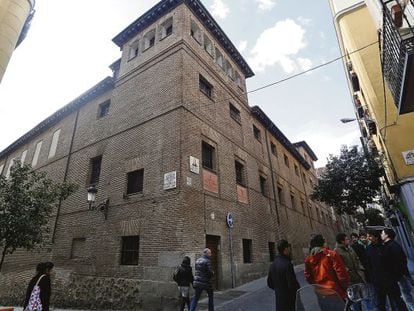Investigators searching for Cervantes locate four sets of human remains
Project to find body of literary giant will now focus efforts on scientific testing to confirm identity

Human remains have been found in four different areas of Las Trinitarias, a Madrid church that is thought to be the site where Don Quixote author Miguel de Cervantes was buried in 1616. The sets of bones have been found in cavities located around 1.5 or two meters underground, and were located thanks to georradar scans carried out by Luis Avial, the technical director of georradar company Falcon High Tech, Rafael Fraguas reports.
The project to locate the body of the literary giant will now embark on a new phase, focusing on scientific investigation. Specialist Francisco Etxeberría will examine the remains to determine whether they belong to the writer.
The most recent results of the project were presented at a press conference on Monday by historian Fernando de Prado, researcher Luis Avial and forensic anthropologist Francisco Etxeberría, via a report that revealed the details of the georradar scans carried out at the end of April.
The bones of his left hand were crippled and both sides of his jaw were toothless”
In April, investigators held a press conference at which they presented their hypothesis about the whereabouts of Cervantes’ burial site – thought to be in the old cloistered nuns’ convent, located in the capital’s Las Letras neighborhood – as well as the technical aspects of the project. At the time they drew attention to the “vital importance” of locating remains from the writer’s left forearm, given that their distinctive characteristics would serve to identify the body. “The bones of his left hand were crippled and both sides of his jaw were toothless,” a source explained back in April.
The investigation is taking place four centuries after the death of the writer, and has been granted a budget of €12,000 by the Madrid City Council.
The total cost of the search and identification is expected to reach €100,000, and is likely to be completed by the end of 2014.
A 2013 investigation in the United Kingdom claimed to have located the remains of King Richard III buried under a car park in Leicester, although the accuracy of that claim has since been called into question.











































